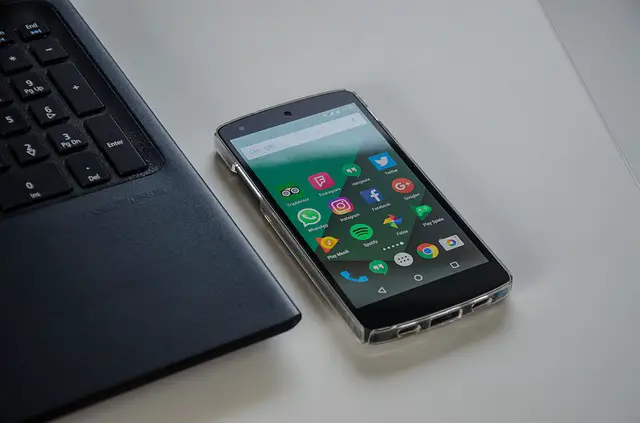It’s an app-driven world: Adults now spend more than three and a half hours per day on mobile devices, and 90 percent of that time is spent in-app.
Even more telling? Over half of all app time happens in a user’s “favorite” app — making this primary position the goal for any brand hoping to capture consumer interest.
Yet there’s a dark side to this app adoption: Twenty-one percent of users delete new apps after just one use.
With so many applications now vying for customer attention, it’s easy for brands to get lost in the noise.
Even if they do make it onto coveted mobile device home screens, there’s no guarantee of longevity — applications that look great but can’t perform, consistently crash or don’t work as intended are abandoned as quickly as they’re installed.
What does this mean for your company?
If apps don’t meet expectations, they’re eliminated. If you want to win consumer loyalty, first you have to win at mobile apps testing. Here’s how.
How To Win At Mobile Apps Testing

1. Start From Scratch
Pretend you’re a typical app user. What’s the first thing you need to do? Download and install the app from a reputable source.
For testing purposes, this means making sure your app is accessible through web stores and direct web page links, and that it installs on mobile devices without generating errors.
Next, check out the basic behavior of your application.
Does it launch correctly in the target language? Is it stable over time? What happens if you close and open it five times in a row? Ten? Twenty? What if you install it somewhere other than the default location, or attempt to download an update?
This testing is all about initial impressions: If apps encounter issues on startup, users won’t bother opening them again.
2. Test Your Text
Text matters. Not just what you say, but how you say it — users expect applications that are free of spelling errors, are grammatically correct and account for local language requirements.
It’s also worth testing the technical text details: Does text randomly cut off or overlap with other information? Is the font size (and type) easy to read?
Bottom line? Great text conveys information but is otherwise ignored. If users are noticing your text, you have a problem.
3. Re-evaluate Response Times
Users expect responsive apps. Long loading times and slow response times frustrate users, who won’t wait around to see if subsequent updates improve the experience.
In some cases, delays are unavoidable — ensure apps communicate these delays to users rather than appearing unresponsive or “stuck.”
4. Get on the Fast Track
Speed matters. Apps must be able to quickly respond to user commands and deliver results balanced with a measure of control — users don’t want to feel like they’re missing something or don’t understand what apps are doing.
Also critical? Living up to cross-device expectations.
If your app is supposed to work across tablets and smartphones with multiple operating systems, keep performance consistent.
5. Expect the Unexpected
Users don’t always behave as expected. From multiple key presses to erroneous actions, users take what they believe is the shortest route between applications and results — sometimes despite clear app design.
Want to win at testing? Make sure your app expects the unexpected.
6. Control for Conflict
Applications don’t exist in a vacuum. What happens when users have your app open and get a phone call, text message or decide to start a video chat?
What if they open their camera or launch another app?
What if they lock their device before quitting the app, run your app on low battery, or change USB connections while the app is in use?
If you’re not sure how your app responds to conflicts with other functions or processes, take the time to find out. Controlling for conflict goes a long way toward keeping your app in the user top five.
7. Sort Storage
How much storage does your application require? What about memory usage? Does it leak data over time?
Do updates corrupt or alter saved data? When it comes to storage, assume users won’t be deleting your app anytime soon and test on that basis.
8. Network for Success
You can’t control user network connections, but you can test how your application works across multiple connection types.
Check its performance on Wi-Fi, LTE, 4G and even 3G to ensure ideal performance. Then, see what happens during dropped or intermittent connections. Why?
Because mobile apps must be just that — mobile — capable of handling multiple network transitions without losing data or randomly crashing.
9. Don’t Deny UI
Want better app retention rates? Make sure your UI stands out for the right reasons.
Test all keyboard and touch-screen controls, UI consistency, in-app purchase functions and social media integration.
10. Test Everywhere
Last but (absolutely) not least?
Test your app everywhere you can possibly imagine. Different devices, different operating systems, different networks and different use cases. Test it, break it and then try again.
11. Gold Standard
“Good enough” applications don’t cut it.
To claim top spot and keep your app on user home screens, you need to win at app testing — test everything, break everything, and then test it all again to crush the competition and exceed user expectations.
Philip Lew is Chief Executive Officer of XBOSoft, a software QA and testing company. Lew, who founded the company in 2006, oversees strategy, operations and business development. He holds a PMP certification and a Ph.D. in Computer Science and Engineering from Beihang University.

